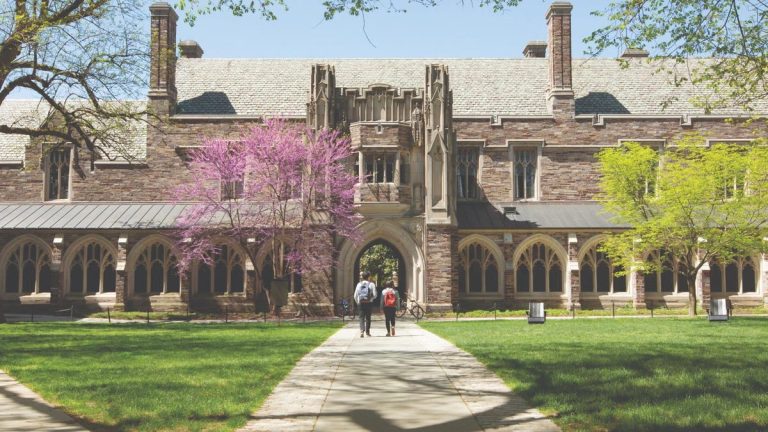A behind-the-scenes look at how Forbes picks the best 500 colleges out of thousands considered each year.
By Emma Whitford, Forbes Staff
To put together Forbes’ 2023 Top Colleges list, we started with a list of U.S. colleges that educate undergraduates according to their Carnegie Classification—a higher education framework that categorizes institutions based on the types of degrees they offer, their research output and specialty focus. We chose doctoral research universities, master’s universities and colleges and baccalaureate colleges, as well as colleges that offered specialized programs in engineering, business and art.
We then evaluated schools using data from two federal education databases (the Integrated Postsecondary Education Data System and College Scorecard); the Seattle-based software and data company PayScale; the Washington, D.C.-based public policy think tank Third Way; the National Center for Science and Engineering Statistics; and some of Forbes’s own lists. Schools that have announced plans to close and those with fewer than 300 undergraduates are excluded from consideration. We also excluded the five federal military academies from the final 500—while they routinely perform well according to our measures, they operate very differently from the other institutions on our list.
We ranked the remaining colleges using the following measures.
Alumni Salary (20%)
We used earnings data from Payscale and College Scorecard to determine which colleges produced the highest-paid graduates. From Payscale, we looked at graduates’ median earnings 6 years and 10 years after graduation. From the College Scorecard, we pulled median earnings data for graduates 6 years and 10 years after they first enrolled at an institution.
Neither data source is perfect. Payscale relies on self-reported survey data, which can result in skewed information—graduates that are employed and happy with their earnings can be more likely to respond. College Scorecard collects information only for those with federal student loans—not all graduates. We weighted each of the four income segments at 5%.
Debt (15%)
Two variables from College Scorecard help us measure the typical debt load for students at a given college. First, we multiplied the median federal loan debt per borrower by the percentage of students who take out federal student loans at the college—we call this the debt and percent borrowed index. Second, we looked at each college’s five-year repayment rate—which is the percentage of graduates who paid at least $1 toward their federal loan principal within five years of entering repayment. Both of these variables were weighted at 7.5% for a total of 15%.
Graduation Rate (15%)
We evaluate the colleges on our list using their six-year graduation rate in order to account for the outcomes of transfer students, part-time students, and other students who take time off for financial, health-related, or other reasons. Ten percent of our model uses the six-year graduation rate for all students, and another 5% looks at graduation rates for Pell Grant recipients, which is often used as a proxy for low-income students at a given institution. We indexed the Pell graduation rate with the proportion of Pell grant recipients at each institution to reward colleges for enrolling and graduating a larger proportion of low-income students.
Forbes American Leaders List (15%)
The Forbes American Leaders List is part of what sets Forbes’s rankings apart from the crowd. The list aims to gauge the leadership and entrepreneurial success of a college’s graduates. To do this, we count how many listmakers each school produced on the most recent Forbes 30 Under 30, Forbes 400, Richest Self-Made Women and Most Powerful Women lists. We also count the undergraduate alma maters of members of the Presidential cabinet, Supreme Court, Congress and sitting governors, as well as winners of the MacArthur Fellowship, Nobel Prize, Breakthrough Prize, Lasker Prize, Fields Prize, Academy Awards, Oscars, Tony’s, NAACP Awards, Guggenheim Fellowship, Presidential Medals, Pulitzer Prizes, and major sport all-stars. This measure is weighted at 15%.
Return On Investment (15%)
To give us a look at the return on students’—and parents’—return on investment at a given institution, Third Way provided a price-to-earnings premium for each college. Third Way calculates this number by dividing the total net price of obtaining a college degree by the post-enrollment earnings boost that students get compared to the typical salary of a high school graduate in their state. This variable is weighted at 10%. We also included a price-to-earnings premium for low-income students, weighted at 5%.
Retention Rate (10%)
To account for student satisfaction, we calculated a three-year average retention rate using IPEDS data, which measures the percentage of students who choose to stay after their freshman year. Typically, we pull the most recent three years for this measure, but after Covid-19 caused widespread stop-outs and deferrals, we decided to exclude 2020 from this measure. Instead, we take an average of retention rates in 2018, 2019 and 2021. This variable was weighted at 10%.
Academic Success (10%)
We used two measures to assess the academic performance of each college. First, we compiled the number of recent graduates of each college who have gone on to win Fulbright, Truman, Goldwater and Rhodes scholarships. Second, we use data from the National Center for Science and Engineering Statistics to determine the average number of alumni who earned a Ph.D. over the last three years. Each measure is weighted at 5%.
MORE FROM FORBES
Read the full article here









